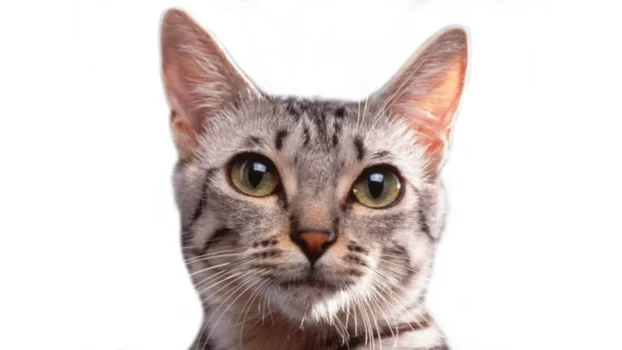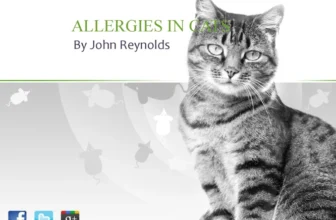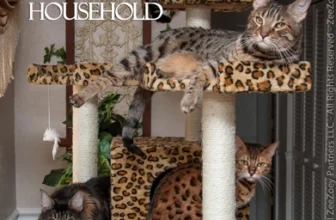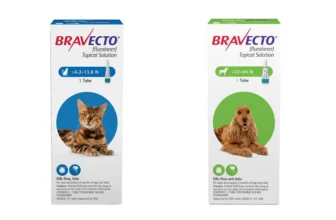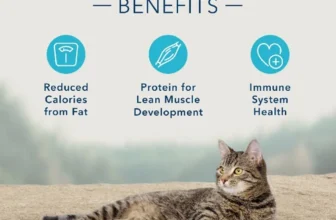As a responsible cat owner, ensuring that your California Spangled cat has a healthy diet is one of the best things you can do for their wellbeing. Feeding your furry friend a balanced diet is essential for maintaining their health, vitality, and overall happiness. But with so much information circulating online about what to feed your cat, it can be challenging to know where to start. In this article, we’ll take a closer look at what a balanced diet for California Spangled cats entails, what to include and avoid in their diet, and how much and how often to feed them. Let’s get started!
What is a Balanced Diet for California Spangled Cats?
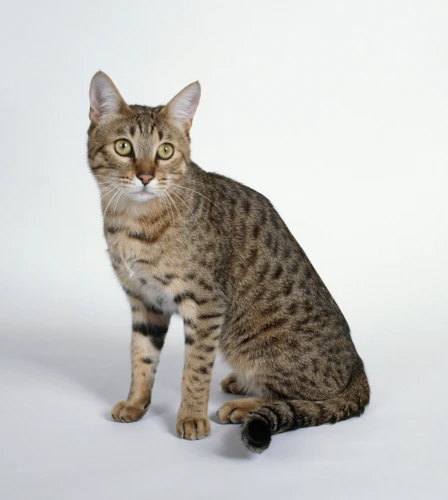
A balanced diet is crucial to the health and wellbeing of any cat, including California Spangled Cats. It is a diet that includes all the necessary nutrients in the right proportions, to meet a cat’s specific nutritional requirements. This type of diet should consist of protein, fats, carbohydrates, fiber, water, vitamins, and minerals. Feeding your California Spangled Cat a balanced diet is the best way to ensure that your furry friend stays healthy and happy for many years to come.
To understand what a balanced diet looks like for a California Spangled Cat, it’s important to first understand their nutritional needs. These cats are generally healthy and strong, but they require a specific balance of nutrients to maintain their health and vitality. Proteins should make up a large portion of their diet, as they are carnivorous and require animal-based proteins for their best health. Fats are also essential for maintaining healthy skin and a good coat, and to provide energy. Carbohydrates are also needed, although in much smaller amounts than protein and fat since cats don’t require high amounts in their diet.
The key to a healthy and balanced diet for California Spangled Cats is to find the right balance of nutrients. It’s important to feed your cat a diet that is rich in animal-based protein and healthy fats, while keeping carbohydrates and fiber at moderate levels. Just as crucial is making sure their diet contains all of the essential vitamins and minerals to promote strong immune systems, healthy bones, healthy skin and hair, and good vision. A well-balanced diet will provide your California Spangled Cat with all the nutrients they need to maintain a healthy and happy life.
For more information on California Spangled Cat nutrition, check out our in-depth guide here. You can also learn about the best food options for your California Spangled Cat here, and even find out whether or not supplements are necessary for their upkeep here.
The Nutritional Needs of California Spangled Cats
As a cat owner, you want to ensure that your California Spangled cat receives the nutrition needed to live a healthy, happy life. Understanding the specific nutritional needs of your feline friend is crucial to providing an appropriate diet. Feeding your cat a balanced diet that meets these nutritional needs is essential for optimal growth, development, and overall health. Let’s explore what your California Spangled cat requires in their diet to thrive.
Find the Right Balance of Nutrients
It is essential to understand that a balanced diet is not just about feeding your California Spangled cat with a variety of foods. Instead, it is crucial to find the right balance of nutrients that will satisfy your furry friend’s unique nutritional needs and promote optimal health.
Nutrient Function Food Sources
Protein Helps in growth, repair, and maintenance of tissues. Meat, fish, poultry, dairy, and plant-based sources like lentils, beans, tofu, and quinoa.
Fat Provides energy, promotes healthy skin, and supports immune function. Fish, poultry, beef fat, plant-based oils like olive, flaxseed, and sunflower oil.
Carbohydrates Provides energy and fiber for digestion. Whole grains like brown rice, oats, and barley, fruits and vegetables like peas, carrots, and pumpkin.
Fiber Promotes healthy digestion, regulates blood sugar, and helps to maintain a healthy weight. Vegetables, fruits, legumes, and whole grains.
Water Necessary for proper body function, hydration, and waste removal. Freshwater, wet food, and moisture-rich foods like cucumber and watermelon.
Vitamins & Minerals Essential for numerous bodily functions, including nerve function, immune system health, and bone health. Meat, fish, poultry, dairy, fresh fruits, and veggies.
Finding the right balance of these essential nutrients can be a daunting task, but it is essential for ensuring your cat’s overall well-being. It is best to consult with a veterinarian or professional animal nutritionist to create a balanced diet plan tailored to your California Spangled cat’s specific needs and lifestyle habits. With the right guidance and a bit of effort, you can provide your feline friend with a healthy and happy life by giving them the proper nutrition they deserve.
The Benefits of a Balanced Diet
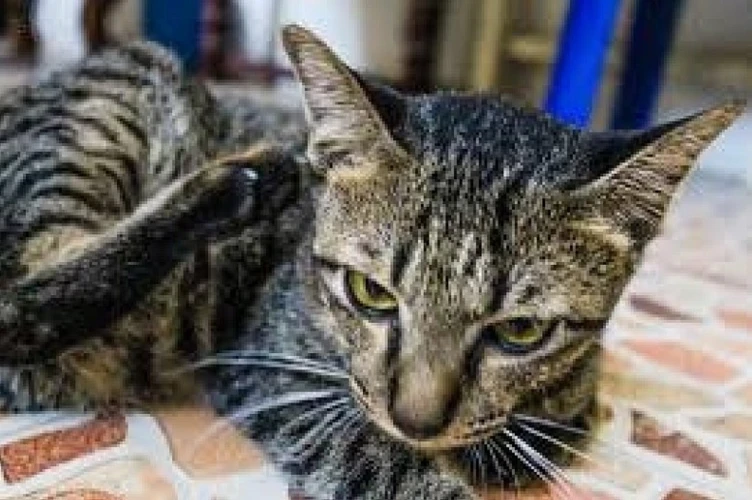
A balanced diet is essential for the overall health and wellbeing of your California Spangled cat. Providing your furry friend with the right balance of nutrients can bring numerous benefits to both their physical and mental health. Below are some of the benefits of a balanced diet for your California Spangled cat.
Healthy Body Weight: A balanced diet is crucial for maintaining a healthy body weight for your cat. Excessive weight can lead to various health problems, including diabetes and heart disease. By ensuring your cat receives the right amount of proteins, carbohydrates, and fats in their diet, you can help them maintain an ideal weight and avoid such health issues.
Strong Immune System: A balanced diet is vital for strengthening your cat’s immune system and protecting them from various diseases and infections. Feeding your cat foods that are rich in protein, vitamins, and minerals can boost their immune system and protect them from illnesses.
Improved Digestion: A balanced diet can help improve your cat’s digestive health, preventing issues such as constipation, diarrhea, and vomiting. Feeding your cat a diet that is rich in fiber can help promote regular bowel movements and aid digestion.
Shiny Coat and Healthy Skin: A balanced diet consisting of the right blend of proteins, fats, vitamins, and minerals can help promote healthy skin and a shiny, lustrous coat for your cat. Such a diet can prevent dry skin, dandruff, and other skin and coat-related issues.
Boosted Energy and Vitality: A balanced diet can help provide your cat with the energy and vitality they need to stay playful and active. The right balance of nutrients in your cat’s diet can help them maintain high energy levels and feel active and happy throughout the day.
A balanced diet is crucial to maintaining a good overall health and wellbeing of your beloved California Spangled cat. By ensuring a balanced and nutritious diet, you can help your fluffy friend live a healthy, active, and long life.
Healthy Body Weight
Maintaining a healthy body weight is crucial for California Spangled Cats. Without the right diet, these felines can become overweight or underweight, both of which can lead to a slew of health problems. Obesity in cats can contribute to diabetes, heart disease, and joint problems, while being underweight can indicate malnutrition and weakened immunity. So, ensuring that your California Spangled Cat maintains a healthy weight is a top priority for any responsible pet owner. Let’s explore how a balanced diet can help achieve this goal.
Strong Immune System
A balanced diet is crucial for maintaining a strong immune system in California Spangled cats. A diet that is rich in essential nutrients can help your cat fight off infections and diseases. For instance, protein is an important component in building and maintaining a strong immune system. Feeding your cat with protein-rich foods such as chicken, fish, or beef will help provide your cat with the necessary amino acids for building strong antibodies.
Another essential nutrient for strong immune health is vitamin C. This vitamin is known for its ability to boost the immune system and increase your cat’s resistance to illnesses. Foods that are high in vitamin C include kiwi, broccoli, and spinach. Including these foods in your cat’s diet can help improve its immune system as well as its overall health.
Vitamin E is another vital nutrient for immune function. It helps in the production of certain types of white blood cells that fight off infections. Including foods like spinach, almonds, and sunflower seeds in your cat’s diet can provide them with sufficient amounts of vitamin E.
Antioxidants are also essential for the immune system, and they help fight against harmful free radicals. Feeding your cat with foods rich in antioxidants such as blueberries, cranberries, and carrots can help improve its immune function.
Supplementing your cat’s diet with omega-3 fatty acids is also crucial for a strong immune system. Omega-3 fatty acids, which can be found in fish oil supplements or fatty fish such as salmon, help reduce inflammation in the body and boost the immune system.
Incorporating nutrient-rich foods and supplements in your cat’s diet is necessary for a strong immune system. A balanced diet rich in protein, vitamins, antioxidants, and omega-3 fatty acids can help ensure your California Spangled cat stays happy and healthy.
Improved Digestion
A balanced diet is crucial for ensuring that your California Spangled cat enjoys a healthy life. One of the benefits of a balanced diet that is often overlooked is that it leads to improved digestion. A diet featuring the right balance of nutrients allows your cat to efficiently break down and absorb the nutrients they need to stay healthy. Here are a few ways that a balanced diet can lead to improved digestion in your California Spangled cat:
| Benefit | Description |
|---|---|
| High-quality protein | A balanced diet for your cat should contain high-quality protein that is easy to digest. This protein plays a crucial role in maintaining the health of your cat’s digestive system. When your cat eats foods that are easy to digest, it can help to reduce the occurrence of indigestion and constipation. |
| Fiber | Another important nutrient for maintaining good digestion is fiber. A balanced diet should contain the right amount of fiber, which helps to ensure that your cat’s digestive system is functioning properly. This fiber helps to regulate bowel movements and can help to prevent the development of certain digestive issues, such as diarrhea and irritable bowel syndrome. |
| Probiotics and prebiotics | Probiotics and prebiotics are also important components of a balanced diet for your cat. Probiotics are live microorganisms that are beneficial to your cat’s digestive system, while prebiotics are non-digestible fibers that act as food for probiotics. These nutrients can help to boost your cat’s immune system, support a healthy digestive system, and reduce inflammation. |
| Avoiding artificial additives | Avoiding artificial additives is also a key factor in maintaining good digestion. Many commercial cat foods contain artificial additives, which can cause digestive issues and other health problems. By feeding your California Spangled cat a balanced diet that avoids these additives, you can help to prevent digestive upset and keep your cat healthy. |
By ensuring that your California Spangled cat is receiving a balanced and nutritious diet, you can help to improve their digestion and prevent common digestive issues. Talk to your veterinarian about the best diet for your cat and be sure to follow their recommendations for feeding and portion control. With a little attention to your cat’s nutrition, you can help them to enjoy a healthy and happy life.
Shiny Coat and Healthy Skin
A shiny coat and healthy skin are not just aesthetically pleasing, they are also an indicator of overall health. To achieve this, it is important to include certain nutrients in your California Spangled cat’s balanced diet.
Omega-3 and Omega-6 Fatty Acids are essential for promoting skin and coat health. These fatty acids can be found in fish, such as salmon or tuna, as well as in flaxseeds and chia seeds. You can also find cat food that has been formulated with these fatty acids.
Biotin, a B-vitamin, is another nutrient that plays a vital role in maintaining healthy skin and coat. It helps to prevent dry, itchy skin and keeps the coat shiny and lustrous. Foods rich in biotin include eggs, liver, and sweet potatoes.
Furthermore, Vitamin A, Vitamin E, and Zinc are also crucial for skin and coat health. Vitamin A helps to maintain healthy skin, while Vitamin E acts as an antioxidant that protects the skin from damage caused by free radicals. Zinc plays a role in the production of oils that keep the skin and coat moisturized.
To summarize, a balanced diet that includes a variety of protein sources, healthy fats, and a mix of vitamins and minerals, such as biotin, Vitamin A, Vitamin E, and Zinc, is essential to promote healthy skin and a shiny coat for your California Spangled cat.
| Nutrient | Sources |
|---|---|
| Omega-3 and Omega-6 Fatty Acids | Salmon, Tuna, Flaxseeds, Chia Seeds |
| Biotin | Eggs, Liver, Sweet Potatoes |
| Vitamin A | Sweet Potatoes, Carrots, Liver |
| Vitamin E | Almonds, Sunflower Seeds, Spinach |
| Zinc | Beef, Chicken, Turkey, Pumpkin Seeds |
Boosted Energy and Vitality
When your California Spangled Cat is getting all the necessary nutrients from a balanced diet, they will have boosted energy and vitality. This means that they will have the energy to play, run, and explore their surroundings while still maintaining a healthy weight.
A balanced diet provides your cat with the calories they need to perform all of their daily activities with ease, without feeling lethargic or sluggish. This is because a balanced diet contains the right amount of proteins, fats, and carbohydrates to fuel your cat’s body.
Proteins are essential for building and repairing muscles, and they also provide amino acids that are necessary for your cat’s overall growth and development. Good sources of protein for your California Spangled Cat include chicken, fish, and beef.
Fats play an important role in providing your cat with the energy they need to maintain an active lifestyle. They also help regulate your cat’s body temperature by insulating their body from the cold. Good sources of fat for your California Spangled Cat include salmon, chicken liver, and sardines.
Carbohydrates are essential for providing your cat with energy throughout the day. They also provide important vitamins and minerals, such as Vitamin C, that are necessary for your cat’s overall health. Good sources of carbohydrates include whole grains, fruits, and vegetables.
Additionally, a balanced diet provides your cat with essential vitamins and minerals that they need to maintain optimal health. These vitamins and minerals help keep your cat’s immune system strong, promote healthy eyesight and vision, and keep your cat’s coat and skin healthy and shiny.
To make it easier to understand, here’s a table summarizing the types of nutrients your California Spangled Cat needs for boosted energy and vitality:
| Nutrient | Benefits | Good Sources |
|---|---|---|
| Proteins | Builds and repairs muscles Provides essential amino acids for overall growth and development |
Chicken, fish, beef |
| Fats | Provides energy Regulates body temperature |
Salmon, chicken liver, sardines |
| Carbohydrates | Provides energy Provides essential vitamins and minerals |
Whole grains, fruits, vegetables |
| Vitamins and minerals | Strengthens immune system Promotes healthy eyesight and vision Keeps coat and skin healthy and shiny |
Carrots, spinach, sweet potato, pumpkin, blueberries |
By providing your California Spangled Cat with a balanced diet containing all of these nutrients, you are ensuring that they have the energy and vitality required to lead a happy and healthy life.
What to Include in Your California Spangled Cat’s Balanced Diet

Ensuring that your California Spangled cat is receiving a balanced diet is key to its overall health and wellbeing. A balanced diet should contain a proper mix of nutrients, vitamins, minerals, and water to keep your cat healthy and happy.
Protein: This is essential for cats as they are carnivores. Ensure that your cat’s diet contains high-quality protein sources like chicken, beef, or fish. The protein should make up around 25-30% of their diet.
Fat: Fats have a high energy content and are important for maintaining healthy skin, coat, and eyes. Good sources of fat include chicken or fish oil. The fat content of your cat’s diet should be around 10-15%.
Carbohydrates: Unlike humans, felines don’t need many carbohydrates in their diet. It’s best to avoid feeding them grains directly but vegetables like sweet potato, peas, and pumpkin can be given in moderate quantities.
Fiber: Fiber is important for maintaining good digestion and preventing hairballs. Fiber can come from sources such as pumpkin and psyllium.
Water: Hydration is crucial for cats, and providing plenty of fresh drinking water is key to their good health.
Vitamins and Minerals: The addition of vitamins and minerals is essential for maintaining good health and preventing illnesses. Ensure the diet includes minerals like calcium, potassium, phosphorus and vitamins like A, D3, and E.
It is worth noting that the balance of nutrients required by cats can vary according to their age, weight, and activity levels. It is important to consult with a veterinarian to understand your cat’s particular needs and make any necessary adjustments to your cat’s diet.
By including a variety of high-quality protein sources, fats, vitamins, minerals, fiber, and water in your California Spangled cat’s diet, you can help ensure that they are getting all the nutrients they need to maintain good health and happiness.
Protein
When it comes to a balanced diet for California Spangled cats, protein is a crucial component that cannot be overlooked. Protein is essential for the growth and maintenance of your cat’s muscles, tissues, and overall health. It is the building block of life, and without sufficient protein in their diet, your California Spangled cat could suffer from a range of health problems. In this section, we’ll take a closer look at the importance of protein in your cat’s diet and how you can make sure they are getting enough to stay healthy and happy.
Fat
When it comes to fat in a cat’s diet, it is important to remember that not all fats are created equal. While some fats are essential for providing energy and aiding in the absorption of certain vitamins, others can contribute to obesity and other health problems.
Essential Fatty Acids
Essential fatty acids, such as omega-3 and omega-6, are crucial for a cat’s health. These fats cannot be produced by the cat’s body, so they must be obtained through their diet. Omega-3 fatty acids, found in fish oil, can help improve immune function and reduce inflammation. Omega-6 fatty acids, found in vegetable oils, are important for skin and coat health.
Here is a breakdown of some sources of essential fatty acids for cats:
| Fatty Acid | Source |
|---|---|
| Omega-3 | Fish (salmon, tuna, sardines) |
| Omega-6 | Vegetable oils (corn, soybean, sunflower) |
Too Much of a Bad Thing
While essential fatty acids are important, too much fat in a cat’s diet can lead to obesity and other health problems. High-fat diets can also contribute to the development of pancreatitis, a condition in which the pancreas becomes inflamed.
It is important to choose lean sources of protein and avoid foods that are high in fat. Treats should also be given in moderation to prevent overconsumption of calories.
By finding the right balance of fats in their diet, you can help your California Spangled cat maintain a healthy weight and prevent health problems. Consult with your vet to determine the best diet for your cat and ensure they are getting all the essential nutrients they need.
Carbohydrates
Carbohydrates are also an important component of a balanced diet for California Spangled Cats. They are responsible for providing energy to the body and are essential for maintaining proper bodily functions. While cats are obligate carnivores, which means their diet mainly consists of protein, they can benefit from some carbohydrates in their diet.
Examples of healthy carbohydrates for California Spangled Cats
| Food Item | Carbohydrates Content |
|———————|———————-|
|Sweet Potatoes |16g per 100g |
|Green Peas |14g per 100g |
|Pumpkin |7g per 100g |
|Lentils |20g per 100g |
|Chickpeas |27g per 100g |
|Oatmeal |11g per 100g |
|Brown Rice |23g per 100g |
Carbohydrates from these sources provide essential fiber and energy to support your cat’s overall health and wellbeing. It’s essential to remember that carbohydrates should only make up a small part of your cat’s diet. Too many carbohydrates can lead to obesity and other health issues, so it’s important to find the right balance.
When choosing cat food, it’s important to check the ingredients list. Look for foods that contain healthy carbohydrates and avoid those that contain high amounts of fillers or carbohydrates from unhealthy sources such as corn, wheat, or soy, which can be difficult for cats to digest.
Carbohydrates can play an important role in your California Spangled Cat’s diet, but they should only make up a small part of their meal. Choose healthy sources such as sweet potatoes, green peas, or oatmeal to provide essential nutrients and energy to your cat’s diet.
Fiber
Fiber plays a crucial role in maintaining a California Spangled cat’s overall health. It is an essential nutrient that supports digestive function, promotes regular bowel movements, and prevents constipation. Feeding your California Spangled cat with fiber-rich food can also help regulate blood sugar levels and lower the risk of obesity and diabetes.
Here are some fiber-rich foods that you can incorporate into your California Spangled cat’s diet:
- Canned pumpkin: A great source of soluble fiber, canned pumpkin can help regulate digestion and bowel movements. Be sure to use plain canned pumpkin, not pumpkin pie filling, and introduce it to your cat’s diet gradually.
- Berries: Blueberries, raspberries, and strawberries are delicious and healthy treats for your feline companion. They are rich in fiber, vitamins, and antioxidants that can help strengthen your cat’s immune system.
- Leafy greens: Spinach, kale, and other leafy greens are excellent sources of fiber, vitamins, and minerals. However, keep in mind that some cats may not like the taste of greens, so it may take some effort to get them to consume these foods.
- Grains: Brown rice, oatmeal, and quinoa are among the most fiber-dense grains that you can feed your California Spangled cat. Be cautious when feeding grains, as some cats are sensitive to them and may develop diarrhea or other digestive issues.
Remember that too much fiber can have adverse effects on your cat’s digestive health, so it’s crucial to consult with a veterinarian to determine the appropriate amount for your feline companion. Providing your California Spangled cat with a balanced diet that includes adequate amounts of fiber can help them maintain their overall health and wellbeing.
Water
Water is an essential nutrient for all living beings, including California Spangled Cats. As a responsible cat parent, it’s important to make sure your furry friend has access to clean and fresh water at all times. In fact, ensuring that your cat is well hydrated is just as important as providing them with the right amount of food. Water helps to regulate body temperature, aids in digestion and helps to prevent dehydration and urinary tract infections.
How Much Water Does Your California Spangled Cat Need?
The amount of water your California Spangled Cat needs depends on their size, activity level, age, and other factors. As a general rule, cats should drink about 2-4 ounces of water per 5 pounds of body weight. So, if your cat weighs 10 pounds, they should drink at least 4-8 ounces of water per day.
Wet Food vs. Dry Food
Cats can get most of their water intake from their food, especially if they eat wet food. Wet food typically contains around 75% water, while dry food only contains around 10% water. So, if you’re worried that your cat isn’t drinking enough water, you may want to consider feeding them more wet food or even adding more water to their dry food. Additionally, incorporating a water fountain into your cat’s routine may also encourage them to drink more water.
Tips for Encouraging Your California Spangled Cat to Drink More Water
If your cat is not drinking enough water, there are a few things you can do to encourage them:
| Tip | Description |
|---|---|
| Use a fountain | Cats are often attracted to running water, and a fountain may encourage them to drink more often. |
| Use a shallow dish | Some cats don’t like their whiskers touching the sides of the bowl, so using a shallow dish may be more appealing to them. |
| Use separate water bowls | Some cats prefer to drink from a separate dish for each meal, so providing multiple bowls may encourage them to drink more water. |
| Flavor the water | Adding a little bit of tuna juice or chicken broth to the water can make it more appealing to your cat. |
| Change the water frequently | Cats prefer clean, fresh water, so changing the water in their bowl frequently may encourage them to drink more. |
Providing your California Spangled Cat with access to clean, fresh water and monitoring their daily water intake is just as important as feeding them a balanced diet. Incorporating wet food into their diet and using a water fountain or changing their water frequently may help to ensure that your cat stays properly hydrated and healthy.
Vitamins and Minerals
Providing your California Spangled Cat with a balanced diet that is rich in essential vitamins and minerals is crucial for optimum feline health. Vitamins are organic compounds that your cat’s body requires in small amounts but cannot produce themselves. Minerals, on the other hand, are inorganic compounds that are also essential for your cat’s health.
Here is a list of vitamins and minerals that should be included in your feline friend’s diet:
- Vitamin A: necessary for good vision, a healthy immune system, and skin and coat health. Vitamin A can be found in liver, fish, and eggs.
- Vitamin D: important for calcium absorption, bone growth, and immune system function. Your California Spangled Cat can get Vitamin D from sun exposure or from dietary sources such as fish and egg yolks.
- Vitamin E: helps protect cells from damage and supports healthy skin and coat. Vitamin E can be found in nuts, seeds, and vegetable oils.
- Vitamin K: vital for blood clotting. Vitamin K is mostly found in leafy greens such as spinach and kale, as well as in liver and egg yolks.
- Calcium: important for bone health, muscle function, and nerve transmission. Calcium can be found in dairy products, seafood, and leafy greens.
- Phosphorus: also essential for bone health, as well as cell function and energy production. Phosphorus is present in meat, fish, and dairy products.
- Magnesium: important for muscle and nerve function, as well as bone health. Magnesium can be found in nuts, seeds, and leafy greens.
- Zinc: supports immune function, wound healing, and skin and coat health. Zinc is present in meat, seafood, and eggs.
- Selenium: a powerful antioxidant that supports immune function and thyroid health. Selenium can be found in meat, poultry, and seafood.
It is important to note that too much of certain vitamins and minerals can be harmful to your cat’s health. Always consult with your veterinarian before adding any supplements to your feline friend’s diet. Providing your California Spangled Cat with a well-balanced diet that includes natural sources of these essential vitamins and minerals will help keep them healthy and thriving.
What to Avoid in Your California Spangled Cat’s Diet
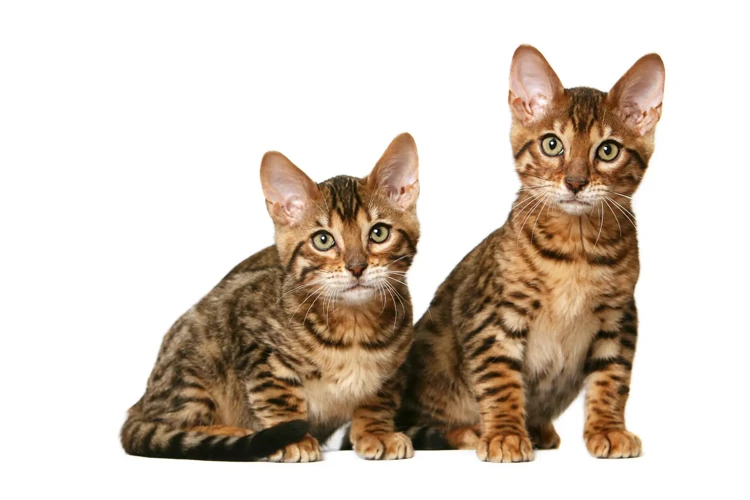
As much as it’s important to understand what to include in your California Spangled Cat’s diet, it’s equally important to be aware of what to avoid feeding them. Here are some of the foods that should be excluded from your feline friend’s diet:
Processed Food: Processed food is a big no-no for California Spangled Cats. These felines have a sensitive digestive system and consuming processed food can lead to digestive issues like constipation, diarrhea, and vomiting. Opt for fresh, unprocessed food options such as raw or cooked meat for your furry friend’s health.
High-Carbohydrate Food: Carbohydrates are a source of energy, but excess consumption can lead to weight gain, and other health problems like diabetes. Foods that contain high amounts of carbohydrates such as wheat, corn, or rice should be avoided. Instead, opt for protein-rich food options like chicken, fish, and beef to meet your cat’s energy needs.
Artificial Additives: Artificial additives such as flavors, colors, and preservatives can be harmful to your California Spangled Cat’s overall health. These additives can trigger allergic reactions, and studies have shown that they can also potentially cause long-term health issues. It’s important to keep an eye on the ingredients and choose only natural, chemical-free food options.
Low-Quality Cat Food: Not all cat food is created equally. Some manufacturers use low-quality ingredients, fillers, and artificial preservatives to reduce costs and increase shelf life. Such foods can harm your cat’s health in the long run. Always check the ingredient list and opt for high-quality food options to ensure a healthy and balanced diet for your feline friend.
Feeding your California Spangled Cat with a balanced diet is crucial for their overall health and wellbeing. Avoiding processed food, high-carbohydrate food, artificial additives, and low-quality cat food can prevent potential health problems and ensure your furry friend lives a long, happy, and healthy life.
Processed Food
When it comes to selecting the right diet for your California Spangled cat, it’s essential to pay attention to the quality of the food you choose. One type of food that you should steer clear of is processed food. This type of food can be harmful to your cat’s health and could potentially lead to long-term health problems if consumed regularly. While it may be tempting to opt for convenience, feeding your feline friend a diet primarily based on processed food can be detrimental to their overall well-being. To ensure your California Spangled cat remains healthy, let’s take a deep dive into why processed food should be avoided, and what other options are available.
High-Carbohydrate Food
It is important to avoid feeding your California Spangled cat high-carbohydrate foods as they do not provide the necessary nutrients and can lead to health problems such as obesity, diabetes, and dental issues. Foods high in carbohydrates include grains, potatoes, and foods with added sugars.
Grains: Many processed cat foods contain grains such as wheat, corn, and soy. These grains are used as fillers and can lead to weight gain and digestive issues in your cat. Instead, look for cat foods that are grain-free and contain high-quality sources of protein such as chicken, turkey, or fish.
Potatoes: While potatoes may seem like a healthy source of carbohydrates, they can lead to weight gain and blood sugar imbalances in cats. Instead, focus on feeding your cat vegetables that are lower in carbohydrates such as broccoli, spinach, or kale.
Added sugars: Foods that contain added sugars such as candy or soda should be kept away from your California Spangled cat as they can lead to dental issues and weight gain. Additionally, many processed cat foods contain added sugars to improve taste which can lead to health problems in the long run.
It is important to limit your California Spangled cat’s intake of high-carbohydrate foods to prevent health problems. Instead, focus on feeding them high-quality sources of protein, vegetables that are lower in carbohydrates, and avoiding foods with added sugars. Below is a table summarizing some examples of high-carbohydrate foods to avoid.
| High-carbohydrate foods to avoid: |
|---|
| Grains (wheat, corn, soy) |
| Potatoes |
| Added sugars (candy, soda, processed cat food) |
Artificial Additives
As a responsible pet owner, it is important to be aware of the ingredients present in your California Spangled cat’s food. One of the key things to watch out for in their diet is the presence of artificial additives. These are substances that are added to cat food to increase its shelf life, improve its texture, or enhance its flavor. However, many of these additives are harmful to cats and can cause a range of health problems.
Here are some artificial additives that should be avoided:
- Chemical preservatives: These are added to cat food to prevent spoilage and extend its shelf life. Examples include BHA (butylated hydroxyanisole), BHT (butylated hydroxytoluene), and ethoxyquin. These preservatives have been linked to cancer and have been banned from use in some countries.
- Artificial colors: These are added to cat food to make it look more appealing. However, studies have shown that certain colors, such as Red 40 and Yellow 5, can cause hyperactivity and behavioral issues in cats.
- Artificial flavors: These are added to cat food to enhance its taste. However, they often contain chemicals that can be harmful to cats. For example, some artificial flavors contain monosodium glutamate (MSG), which can cause seizures in cats.
- Sweeteners: Some cat food manufacturers add sweeteners to their products to make them more appealing. However, cats do not have a natural sweet tooth, and these additives can cause obesity, diabetes, and other health problems. Examples of sweeteners include corn syrup, fructose, and caramel.
To avoid these harmful additives, it is important to read the labels of your cat’s food carefully. Look for products that are made from natural ingredients and do not contain any artificial additives. Alternatively, you can prepare homemade food for your cat using fresh, wholesome ingredients.
Remember, your California Spangled cat’s health is in your hands. By being vigilant about their diet and making sure they are eating a balanced, nutritious meal, you can help them live a long and healthy life.
Feeding Schedule and Portions
Creating a feeding schedule and portion control for your California Spangled cat is essential to ensure that they receive the appropriate nutrition and maintain a healthy weight. Firstly, it’s important to note that cats are obligate carnivores, meaning that they require a primarily meat-based diet to meet their nutritional needs.
How Often to Feed Your California Spangled Cat: Adult cats should be fed two to three times a day, with a consistent feeding schedule to help regulate their appetite and prevent overeating. Kittens, on the other hand, require more frequent small meals throughout the day, typically four to six times a day. It’s also important to note that cats prefer to eat small meals frequently, rather than one large meal a day.
How Much to Feed Your California Spangled Cat: The amount of food your California Spangled cat needs is dependent on their weight, age, and activity level. It’s crucial to consult with your veterinarian for a specific feeding guide for your cat based on their individual needs. Overfeeding can lead to obesity-related health problems, such as diabetes and arthritis, while underfeeding can result in nutrient deficiencies.
Portion control is crucial to maintaining a healthy weight in cats. Measure out the appropriate amount of food for your cat based on their feeding guide and divide it into multiple small meals throughout the day. Do not free-feed or leave food out all day, as this can lead to overeating and obesity.
In addition to portion control, it’s essential to provide fresh and clean water for your California Spangled cat at all times. Canned or wet food can also help increase your cat’s water intake and prevent dehydration, which can lead to urinary tract problems.
Creating a consistent feeding schedule and portion control is crucial to ensure that your California Spangled cat receives the proper nutrition and maintains a healthy weight. It’s important to consult with your veterinarian for an individualized feeding guide and to regularly monitor your cat’s weight and overall health.
How Often to Feed Your California Spangled Cat
When it comes to feeding your California Spangled cat, it’s important to establish a consistent schedule to ensure their nutritional needs are met. However, determining how often to feed them can be a perplexing task for pet owners. Factors such as their age, weight, and activity level can all play a role in deciding how often to offer meals. By understanding their dietary requirements and following a proper feeding routine, your furry feline can stay healthy and happy for years to come. Here are some tips to help guide you in creating a feeding schedule for your California Spangled cat.
How Much to Feed Your California Spangled Cat
Determining the proper amount of food to feed your California Spangled cat is crucial to maintaining their overall health. To find the right serving size for your cat, the first step is to check the feeding recommendations on the food packaging. However, individual cats may have unique dietary needs that require adjustments to these general guidelines.
Factors to Consider
To determine how much to feed your California Spangled cat, you should take into account several factors, including:
- Age
- Weight
- Activity level
- Metabolic rate
Serving Sizes
As a general rule, adult California Spangled cats should consume about 30 calories per pound of body weight per day. For example, a 10-pound cat would require approximately 300 calories per day.
To make things easier, you can use the table below as a guide to help you approximate how much food your California Spangled cat needs based on their weight.
| Weight | Calories per Day | Serving Sizes (6-8 oz cans/day) |
|---|---|---|
| 4 lbs | 120 calories | 1/3 – 1/2 can |
| 6 lbs | 180 calories | 1/2 – 2/3 can |
| 8 lbs | 240 calories | 2/3 – 3/4 can |
| 10 lbs | 300 calories | 3/4 – 1 can |
| 12 lbs | 360 calories | 1 – 1 1/4 cans |
| 14 lbs | 420 calories | 1 1/4 – 1 1/2 cans |
It’s important to also take note of your California Spangled cat’s body condition. If your cat is overweight or underweight, you may need to adjust their feeding amount to help them maintain a healthy weight.
Finding the right feeding amount for your California Spangled cat can take some trial and error, but using a combination of feeding guidelines and your cat’s individual needs can help you establish a healthy and balanced diet that will promote optimal health and wellbeing.
Conclusion
As cat owners, we all want to ensure that our furry companions are living a happy and healthy life. Providing a balanced diet is one of the most important aspects of that. A proper diet can not only improve your California Spangled cat’s physical health but also their mental wellbeing. By following the guidelines outlined in this article, you can give your beloved pet the gift of health and happiness. So, let’s summarize the key takeaways on how to provide your California Spangled cat with a balanced diet.
Give Your California Spangled Cat the Gift of Health with a Proper Diet
A proper diet is the basic foundation of a healthy lifestyle, and this applies to California Spangled Cats as well. By giving your beloved feline friend a balanced diet, you are ultimately giving them the gift of good health and longevity. Here are some tips for ensuring that your California Spangled Cat’s diet is well balanced and wholesome:
- Consult with a veterinarian: Before making any changes to your cat’s diet, it is always a good idea to consult with a veterinarian first. They can provide you with valuable guidance on the nutritional needs of your cat based on their age, weight, and overall health.
- Select high-quality ingredients: When it comes to feeding your California Spangled Cat, go for high-quality ingredients that are free from harmful additives and preservatives. Choose premium-grade cat food that is made from natural sources of protein, such as chicken, turkey, or fish.
- Incorporate a variety of nutrients: Apart from protein, your cat’s diet should also include healthy fats, carbohydrates, fiber, vitamins, and minerals. These nutrients are essential for maintaining a healthy weight, strong immunity, and good digestive health in your cat.
- Avoid overfeeding: As much as you may want to please your feline friend with treats and extra food, overfeeding can lead to obesity and other health problems. Follow the recommended feeding guidelines provided by your veterinarian to ensure that your cat is getting the right amount of food based on their age and weight.
- Monitor your cat’s health and adjust their diet accordingly: Keep a close eye on your California Spangled Cat’s overall health and behavior. If you notice any changes in their weight, appetite, or energy levels, consult with your veterinarian and adjust their diet accordingly.
By following these tips and providing your California Spangled Cat with a nutrient-rich diet, you can help them live a longer and healthier life. Remember that your cat’s diet is a crucial part of their overall well-being, so make sure that you are giving them the best possible care by providing them with a balanced and wholesome diet.
Frequently Asked Questions
What is the best protein source for California Spangled Cats?
The best protein sources for California Spangled Cats are animal-based proteins such as chicken, turkey, and fish.
Should I feed my California Spangled Cat a grain-free diet?
While some cats may benefit from a grain-free diet, it is not necessary for all cats. Consult with your veterinarian before making any diet changes.
Can I feed my California Spangled Cat vegetables?
Yes, you can feed your cat vegetables such as cooked carrots, peas, and green beans in small amounts as a treat.
How can I make sure my California Spangled Cat is getting enough water?
Provide fresh water at all times and consider adding wet food to their diet to increase their water intake.
Can I give my California Spangled Cat dairy products?
Most cats are lactose intolerant, so it is not recommended to give them dairy products. Instead, provide them with animal-based proteins for their nutritional needs.
What are some examples of high-fiber foods for California Spangled Cats?
Some examples of high-fiber foods for cats include sweet potatoes, pumpkin, and apples (without the seeds).
Is it okay to give my California Spangled Cat table scraps?
In general, it is not recommended to give cats table scraps as they may not provide the proper nutrients and can lead to obesity and other health issues.
How do I know if my California Spangled Cat is overweight?
You can determine if your cat is overweight by feeling their ribcage. If you cannot feel their ribs easily, they may be overweight. Consult with your veterinarian for further advice.
What are the risks of feeding my California Spangled Cat too much fat?
Feeding your cat too much fat can lead to obesity, pancreatitis, and other health issues. It is important to find the right balance of nutrients for their diet.
Why is a balanced diet important for California Spangled Cats?
A balanced diet is important for California Spangled Cats to ensure they are receiving all the necessary nutrients for a healthy body weight, strong immune system, improved digestion, shiny coat, boosted energy, and overall vitality.

